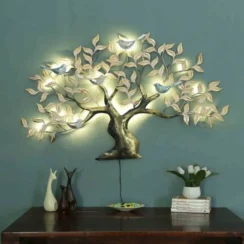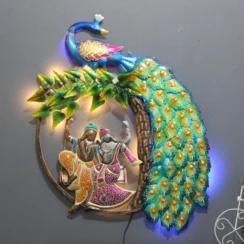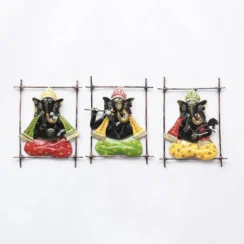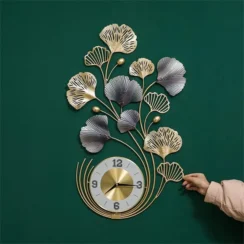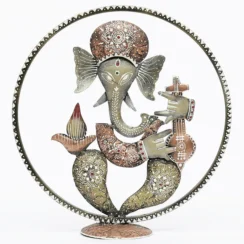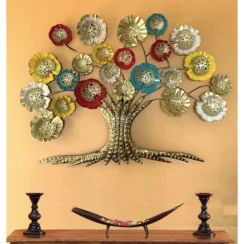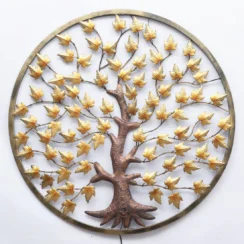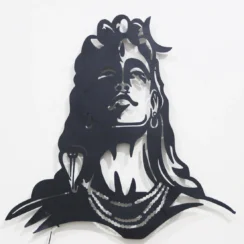The Timeless Allure of Heritage Jewellery
Heritage jewellery holds a special place in the world of adornments, blending the essence of history, culture, and artistry. These heirloom pieces are more than just accessories; they carry stories and traditions passed down through generations. From the intricate designs of Indian heritage jewellery to the symbolic meanings embedded in ancient gold ornaments, heritage jewellery is a testament to craftsmanship and cultural identity.
What is Jewellery?
Jewellery, or “jewelry” as it’s known in American English, refers to decorative items worn for personal adornment. These can include necklaces, rings, bracelets, earrings, and more. Derived from the Old French word “jouel”, and tracing back to the Latin “jocale”, meaning plaything, the word “jewellery” has evolved to encompass a wide variety of adornments crafted from precious metals, gemstones, and other materials.
In Tamil, the word for jewellery translates to “ஆଭରଣங୍கଳ୍” (Aabharanangkal), signifying ornaments that enhance beauty and are cherished in cultural practices and rituals.
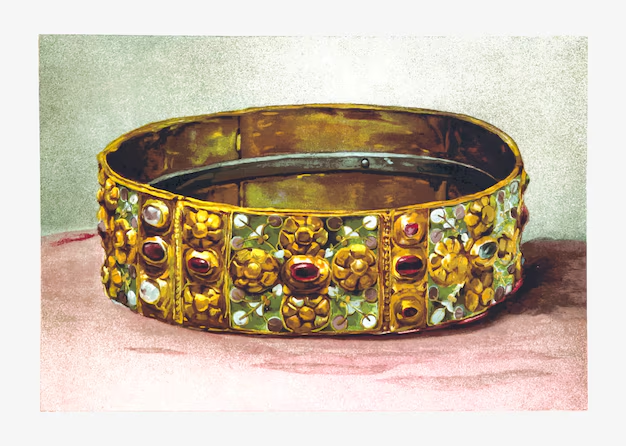
Indian Heritage Jewellery: A Legacy of Elegance
Indian heritage jewelry is synonymous with opulence, intricate craftsmanship, and deep cultural significance. The designs often reflect regional diversity, traditional techniques, and an unmatched aesthetic appeal. Here are some iconic styles of Indian heritage jewelry:
- Kundan Jewellery: Originating from Rajasthan, Kundan involves setting uncut gemstones into gold. This ancient technique is revered for its regal look and intricate craftsmanship.
- Temple Jewellery: Popular in South India, temple jewellery features motifs of gods, goddesses, and sacred symbols, often crafted in gold. These pieces are traditionally worn during cultural festivals and classical dance performances like Bharatanatyam.
- Polki Jewellery: Polki, like Kundan, uses uncut diamonds but retains their natural look. This style exudes a rustic charm and is a favorite in bridal collections.
- Meenakari Jewellery: Known for its vibrant enamel work, Meenakari jewellery adds a splash of color to traditional designs, making it stand out.
- Navaratna Jewellery: Representing the nine celestial planets, Navaratna jewellery is crafted using nine distinct gemstones. It is believed to bring balance and prosperity.
- Jadau Jewellery: Combining techniques like Kundan and Polki, Jadau jewellery is painstakingly handcrafted and often passed down as family heirlooms.
Gold Heritage Jewellery: The Eternal Symbol of Prosperity
Gold heritage jewellery has been a cornerstone of Indian culture, symbolizing wealth, purity, and spirituality. Gold is not merely a metal in Indian tradition; it’s an integral part of rituals, celebrations, and daily life. Heritage gold jewellery pieces like bangles, necklaces, and earrings are often adorned with intricate carvings and designs inspired by mythology and nature.
Gold’s malleability allows artisans to craft exquisite designs, such as:
- Antique Gold Jewellery: Featuring oxidized finishes and vintage patterns.
- Filigree Work: Delicate lace-like patterns crafted from fine gold wires.
- Nakshi Work: Engraved designs showcasing motifs like floral patterns, gods, and traditional symbols.
Heritage Jewellery Meaning in Tamil
In Tamil culture, heritage jewellery, known as “மொழிந்தச் ஆபரணம்” (Mozhinthasa Aabharanam), refers to ornaments passed down through generations. These pieces are treasured for their sentimental and monetary value. Tamil heritage jewellery often includes:
- Oddiyanam: A gold waist belt often embellished with diamonds and rubies.
- Kaasu Malai: A necklace made of gold coins symbolizing wealth and prosperity.
- Vanki: Armlets shaped like an inverted “V,” worn during auspicious occasions.
These designs hold deep cultural importance, making them a staple in Tamil weddings and festivals.

Jewelry Word Origin
The word “jewelry” originates from the Old French word “jouel” and the Latin “jocale”. It initially meant a playful item or trinket. Over centuries, it evolved to represent decorative items crafted from precious materials. The spelling differs across regions—”jewellery” in British English and “jewelry” in American English—but the essence remains universal: beauty, artistry, and significance.
Types of Jewelry
Jewelry can be categorized based on its use, materials, and cultural significance. Here are 10 types of jewelry:
- Necklaces: Ranging from chokers to long chains, they are versatile and timeless.
- Earrings: Available in styles like studs, hoops, and danglers.
- Bracelets: Including bangles, cuffs, and charm bracelets.
- Rings: From simple bands to elaborate designs, rings are universally cherished.
- Anklets: Popular in many cultures, especially in India.
- Brooches: Decorative pins that add elegance to outfits.
- Hair Ornaments: Including tiaras, hairpins, and maang tikka.
- Body Jewelry: Such as nose rings and belly chains.
- Toe Rings: A staple in Indian weddings, symbolizing marital status.
- Cufflinks: Primarily for men, these add sophistication to formal attire.
Jewellery Names List
Here’s a comprehensive list of jewellery items:
- Necklace
- Pendant
- Choker
- Earrings
- Studs
- Danglers
- Hoops
- Bangle
- Bracelet
- Cuff
- Ring
- Anklet
- Brooch
- Maang Tikka
- Toe Ring
- Armlet
- Hairpin
- Waist Chain
- Nose Ring
- Charm
Each piece has its own charm and cultural significance, catering to diverse tastes and traditions.
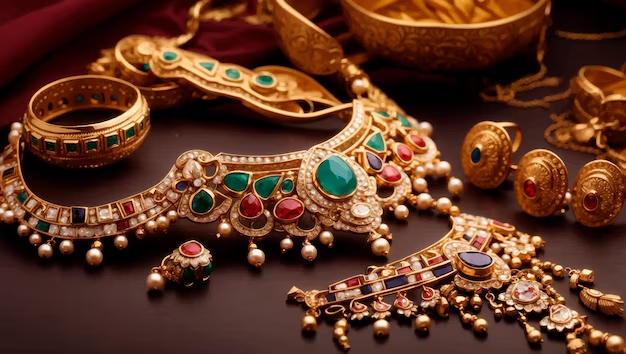
Heritage Jewelry: A Fusion of Tradition and Modernity
Today, heritage jewellery is not just confined to traditional ceremonies. Modern adaptations incorporate contemporary aesthetics while preserving classic designs. For example:
- Fusion Pieces: Combining antique motifs with modern settings.
- Wearable Heirlooms: Lightweight versions of traditional designs for daily wear.
- Sustainable Heritage Jewellery: Crafted using ethical practices and recycled materials.
These innovations ensure that heritage jewellery remains relevant for future generations.
Preserving Heritage Jewellery
To maintain the beauty and value of heritage jewellery, proper care is essential:
- Cleaning: Use mild soap and a soft brush for gold pieces; avoid harsh chemicals.
- Storage: Keep pieces in a dry place, ideally in individual pouches to prevent scratches.
- Regular Checks: Inspect settings and clasps to ensure durability.
- Professional Servicing: Periodically take your jewellery to experts for polishing and repairs.
Why Heritage Jewellery Matters
Heritage jewellery is more than an accessory; it’s a bridge between generations. It represents:
- Cultural Identity: Reflecting traditions and beliefs.
- Artistic Mastery: Showcasing the skills of artisans.
- Emotional Value: Carrying memories and stories of ancestors.
Whether it’s an ornate gold necklace, a simple silver bangle, or a colorful enameled piece, heritage jewelry continues to captivate hearts with its timeless charm.

Heritage jewellery, with its rich history and intricate designs, is a celebration of culture, artistry, and legacy. From the elaborate creations of Indian artisans to the cherished heirlooms of Tamil culture, these pieces symbolize more than just beauty; they embody the stories of our past and the promise of our future. As we continue to treasure and adapt these timeless ornaments, heritage jewellery remains a shining testament to the enduring allure of craftsmanship and tradition.
Explore our New Collection: Click Here


